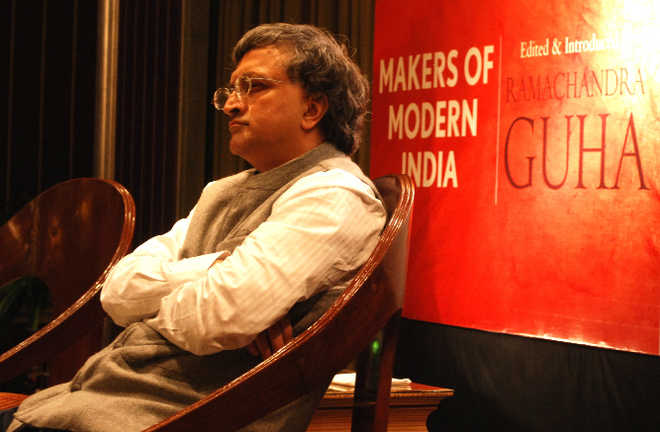Raj Ayyar
Democrats and Dissenters presents the diversity and breadth of Ramchandra Guha’s interests and passions. As such, it is a better introduction to his thought, than his ‘single focus’ works, for example India After Gandhi, Gandhi Before India.
Guha once quipped that the more ‘public’ one is, the less ‘intellectual’ one becomes. The essays in the volume reflect Guha as a ‘public intellectual’, a contemporary Indian gadfly, who can be an equal opportunity basher of governments and thinkers, whether Left-leaning or Right-identified.
As a historian broadly sympathetic to the Congress party of Gandhi’s or Nehru’s time, he flays the Congress in what he believes are its final death throes. In the essay The Long Life and Lingering Death of the Indian National Congress, he holds out little hope for the party caught in a dynastic rut, which precludes creative thinking and a decentered revival at a grass-roots level.
One suspects that Guha, like MJ Akbar, doth protest too much. Surely, it is possible that the grand-old party will come out of its loops and vicious circles to re-invent itself. At least, one cannot rule out that possibility in a premature a priori way.
The essay Eight Threats to Freedom of Expression in India makes it clear that the ‘new’ mood of censorship is far from something invented by the Modi government since 2014. On the contrary, Guha believes that questionable Colonial laws like the sedition law were actually endorsed in watered-down form by the likes of Nehru, Ambedkar and Patel in 1950. Not that Nehru and all were ultra-nationalists or against freedom of expression. Quite the contrary.
Yet, they were very insecure about national security after Gandhi’s assassination and the Partition bloodbath, and hence chose to bolster a sense of security in the chaos of those times by retaining those laws.
Guha did acknowledge at a public lecture in India International Centre based on Eight Threats, that if India was a ‘50-50’, or better yet a ‘60-40’ democracy after Independence, it deteriorated to a ‘40-60’ democracy under the Modi administration.
Perhaps the best essays in the book are his vivid, detailed and affectionate portraits of people he knew well — the late Dharma Kumar of Delhi School of Economics fame, the culture anthropologist Benedict Anderson, and UR Ananthamurthy.
It is tempting to frame Guha’s critical questioning of Left and Right alike, as what one would expect from a Dharma Kumar disciple. Like her, Guha’s main targets are dogmatic Marxism, stagnant political parties, Right-wing fundamentalism and ultra-nationalism.
One thoroughly enjoys Guha’s essay on Amartya Sen. He pays rich tribute to Sen’s cosmopolitanism, his generous liberal humanism and his determination to place secular pluralism within the history of the subcontinent.
Yet, paradoxically, this leads Sen to share common ground with his adversaries — the RSS and the BJP. He, like them, is convinced of a unitary ‘Indian history’, rooted in a glorious golden Indian past, where one can look for the origins of contemporary concerns, interests and debates. It matters not that Sen’s ‘India’ is one of secular argumentative dialogue and debate whereas the ‘India’ of the RSS narrative is a monolithic Hindu account.
Guha believes (arguably one of his incisive insights in the book) that Sen and the RSS share a common premise and method that are faulty.
All in all, well worth a long, leisurely read.
Unlock Exclusive Insights with The Tribune Premium
Take your experience further with Premium access.
Thought-provoking Opinions, Expert Analysis, In-depth Insights and other Member Only Benefits
Already a Member? Sign In Now










